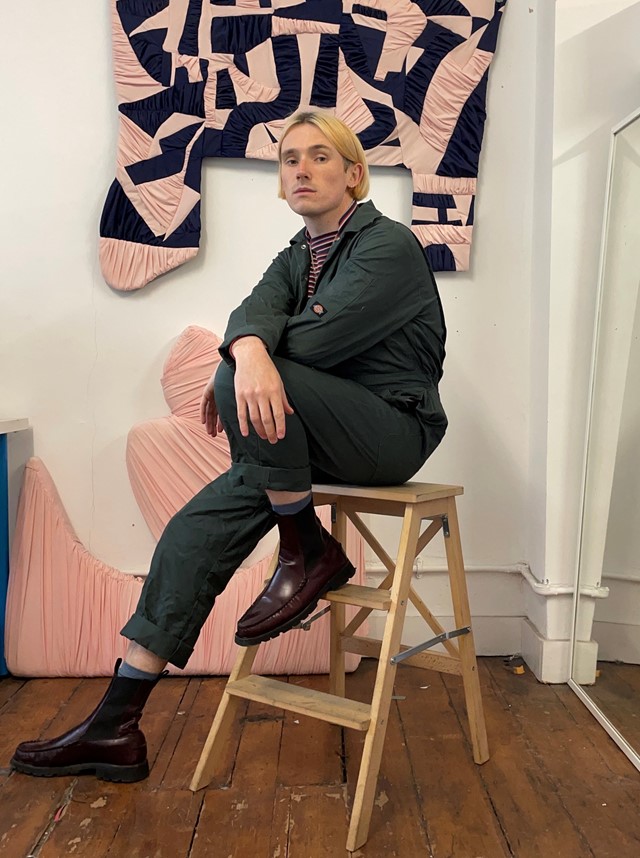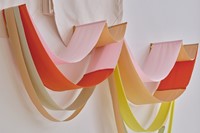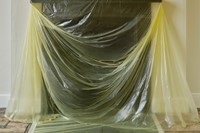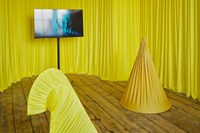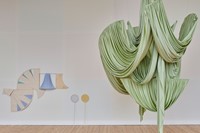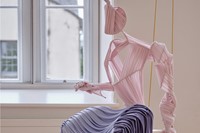Inspired by museum cleaners and the bodies on which classical sculptures were once based, Richard Malone’s new exhibition A Record of Tenderness is an ode to the hidden work behind great art
Hanging in one of the rooms at The Dock in Leitrim, Ireland, like a magnificent textile chandelier, is a mobile sculpture composed of folds of draped green fabric by artist and designer Richard Malone. Delicate yet dynamic, the piece is part of Malone’s captivating new exhibition, A Record of Tenderness. Comprising abstract pieces in jersey and canvas, as well as films, a mural and figurative sculptures in cloth, the exhibition shines a light on what is unseen in the halls of high art, from the bodies on which classical sculptures were once based to the people who clean and prepare these hallowed spaces for the artworks to live.
“Tenderness speaks to something that’s corporeal or about the body, but for me, it’s also like an exchange of labour,” says Malone. Born from a residency at the Centre Culturel Irlandais in Paris, A Record of Tenderness considers the anonymous, often queer, bodies on whom classical sculptures were originally based, or the representation of humble cloth work in marble. In the process, Malone questions what gets exalted in culture, and what gets ignored.
Wandering the Louvre and the Musée d’Orsay, Malone often found themselves “more interested in the things around” the artworks than the art itself: the people cleaning the sculptures, or the painters and decorators refreshing the walls. “There’s this whole process that goes into creating something that’s desirable, and that labour is always left out. Within those institutions, I was most intrigued by the lack of the material language that I grew up with.” Malone’s father, a painter and decorator, painted a mural with Malone for the exhibition, a series of squares in pale sorbet shades that shift as the light changes over the course of a day. Elsewhere, yellow plastic sheeting, of the kind seen in building sites, is draped over a fireplace as delicately as if it were silk. For Malone, who hails from Wexford, Ireland, the exhibition is also a meditation on the many facets of their background and heritage, a series of three-dimensional landscape paintings made with materials found in the real, lived environment – plastic sheeting, builder’s chalk, welded metal.
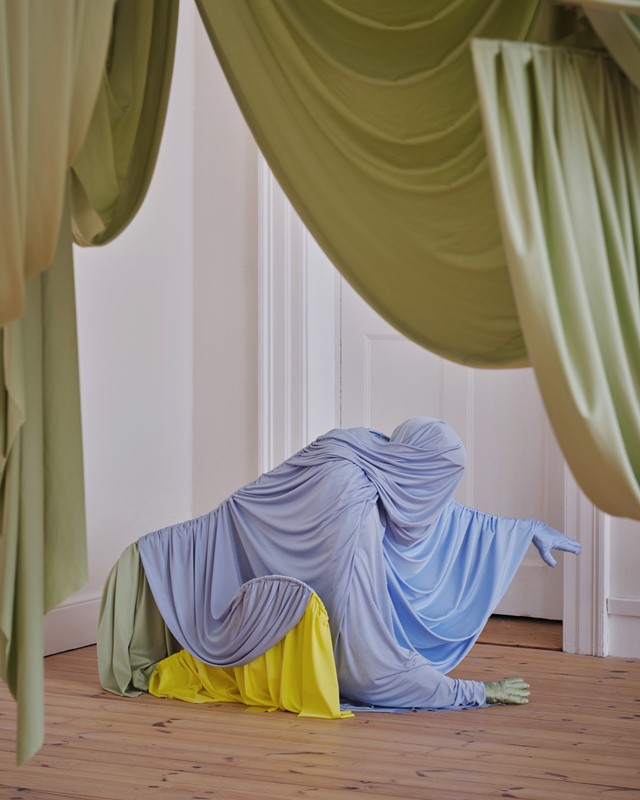
In Malone’s films, dancers make and respond to repeated gestures, nodding to the postures of classical sculpture but also to “the things that queer people know as quite iconic that aren’t recorded in museums”: the movement of Liza Minnelli’s knees in Cabaret, for example, or the way Barbra Streisand uses her hands. In one of the films, Canopy, dancers brush up against a translucent screen, fleetingly leaving their impressions on the fabric. Deceptively simple, the films are in dialogue with the figurative sculptures on show, which make outlines of the human form in cloth. Malone’s scenography is ambiguous and open to multiple interpretations; the figures could be imitating sculptural poses or engaging in forms of labour. Of one of the cloth figures, positioned kneeling on the floor, Malone says: “A lot of people think it’s some religious thing. To me, it looks like someone who is about to sand a skirting board.”
Underpinning all of Malone's work, whether clothing or art, is the artist’s own hand. The question of who makes the objects that are culturally desired and celebrated hit home earlier this year when Malone saw their own work and name – with its connection to a long lineage of tailors in the family – at the Metropolitan Museum as part of the Sleeping Beauties exhibition. By contrast, some of the other pieces on view were simply labelled with the name of the brand. “I just think that’s a really, very obvious way for us to start the conversation,” Malone says. “Who made that?”
A Record of Tenderness by Richard Malone is on show at The Dock in Leitrim, Ireland until 5 October 2024.
